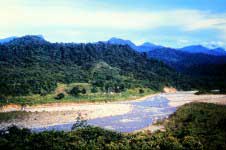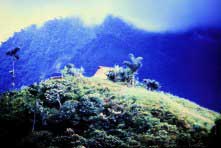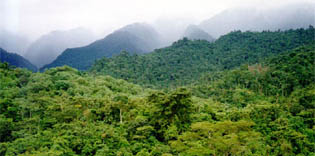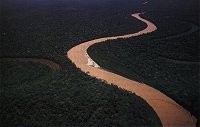

Background Information and Facts
*Between 1985 and 1995, the Amazon rainforest
lost well over two million acres of land each
year.
*In 1996, only seventy percent of the Amazon's
original rainforest remained and only seven
percent of this is protected from development.
*The Amazon Basin includes parts of Brazil, Bolivia,
Colombia, Ecuador, French Guiana,
Guyana, Peru, Surinam, and Venezuela.
*Since 1978 the Brazilian part of the Amazon
alone has shrunk by over 100 million acres. This
is more than ten percent of the original
forest(1).


Why should we save the Amazon?
*It is the largest tropical rainforest in the
world.
*It contains several millions species of insects,
plants, and animals.
*There are over two thousand documented endangered
animals and plants, with many species
still not determined(2).
*It is home to seventy percent of all plants
identified as having anti-cancer properties by the
National Cancer Institute(3).
*Animals usually cannot move on when their habitat
is removed. Ex: If a fig tree is cut down,
and there are no fig trees of the wasp's
species nearby, the wasp dies(4).


Internationally
*The Brazilian constitution guarantees native
people the land that they occupy with the
exclusive use of all of its natural resources.
Yet, "over half of the tribes haven't even had their
territory recognized or delineated, yet
development and occupation are already taking place in
their lands(5).
*All of the offenses that were performed against
North American Indians by Europeans are being
practiced against the native tribes of
the rainforests.
*Pattern of offering gifts, introducing diseases,
cultural "genocide" and ignoring land claims
continues today in the Amazon(6).
Here are some links:
Amazon
River Basin
Amazon
Conservation Team
Live
From the Rainforest
Journey
to Amazonia
1. Norman Myers, The Primary Source, New York: W.W. Norton & Co., 1984, 29.
2. Ibid, 38.
3. Lois Warburton, Rainforests, San Diego: Lucent, 1991: 19.
4. Myers, 31.
5. David Suzuki, "The Rape of the Amazon,"
Inventing
the Future, Toronto: Stoddart, 1989:
136.
6. Ibid, 145.